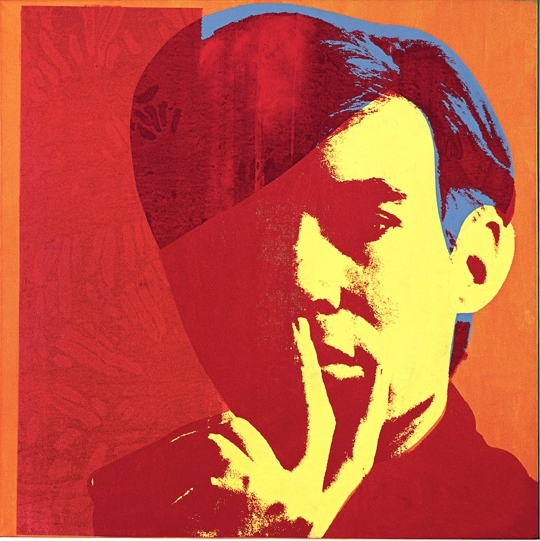 Regarding Warhol: Sixty Artists, Fifty Years
Regarding Warhol: Sixty Artists, Fifty Years
Metropolitan Museum of Art
1000 Fifth Avenue (at 82nd Street)
Closed Mondays; Tuesday–Thursday 9:30 a.m.-5:30 p.m.; Friday and Saturday 9:30 a.m.-9:00 p.m.; Sunday 9:30 a.m.-5:30 p.m.
Price of admission: pay as you want; recommended prices for Adults $25; Students $12
September 18 – December 31, 2012
Andy Warhol’s fifteen minutes of fame seems like it’s on repeat. Earlier this month, the Warhol Foundation made news when it was announced more than 20,000 pieces would be sold via the auction house Christie’s, potentially upending the value of the current works in the marketplace. That, however, hasn’t stopped the Foundation from collaborating with the high-end cosmetics brand NARS for a new product line. And now, an exhibit at the Metropolitan Museum of Art, titled “Regarding Warhol: Sixty Artists, Fifty Years,” explores Warhol’s immense influence not only within art and commerce, but also within the contemporary art world in general.
The exhibit, which combines approximately 45 of Warhol’s works with a who’s who of 59 other contemporary artists from Jeff Koons, Damien Hirst, Gerhard Richter, Barbara Kruger, Matthew Barney, Edward Ruscha, Sarah Lucas to Cindy Sherman, is akin to a “Best Of” sort of artwork-mixtape, of the most well-known contemporary works of art within the last fifty years—which is not necessarily a bad thing for Warhol or Pop Art fans.
A lot to take in at first glance, the show is organized into five galleries and themes, first opening with “Daily News: From Banality to Disaster,” which explores Warhol’s fascination with consumer and media culture. Here, the Coke bottles, Brillo Boxes, and the Campbell’s Soup cans are center stage, juxtaposed with other brand-named work such as Tom Sachs’ brilliant Chanel Chain Saw (1996) and Ai Wei Wei’s moderately hilarious Neolithic Vase with Coca-Cola Logo (2010). The subsequent gallery, “Portraiture: Celebrity and Power,” continues with a parade of well-known and visually memorable works, featuring some of Warhol’s most famous portraits of Jackie Kennedy and Elvis Presley along with other famous artists’ work of famous people, like Julian Schnabel’s broken plate painting, Barbara Walters (1990), Elizabeth Peyton’s Blue Kurt (1995) of Kurt Cobain and Chuck Close’s magnificent Phil (1965) of Philip Glass.
The last three galleries dig a little deeper past visual referencing and image manipulation with a section titled “Queer Studies: Shifting Identities,” which highlights Warhol as a pioneer in creating art that referenced gender identity and sexuality in the post-war period. The show ends with “No Boundaries: Business, Collaboration, and Spectacle,” displaying how Warhol’s skills as not only an artist, but also a graphic designer—being commissioned to collaborate and create art for a business or an environment (which is still happening now, as previously mentioned with NARS)—is not unlike how Takashi Murakami, considered Japan’s Andy Warhol, collaborated with Louis Vuitton (and LV just recently collaborated with another Japanese mega-artist, Yayoi Kusama). The most fun is perhaps the second to last gallery entitled “Consuming Images: Appropriation, Abstraction and Seriality,” where we see references, sometimes self-references, like Warhol’s Marilyn Monroe’s Lips (1962), in serial patterns, making for a Warhol-on-Warhol effect and also references to referencing as seen in the work of artist Vik Muniz, whose wonderful chocolate syrup painting of Jackson Pollock painting, Action Photo, after Hans Namuth from Pictures of Chocolate (1997), is featured.
-Janet Kim
Image:
Andy Warhol (American, 1928–1987)
Self-Portrait
1967
Acrylic and silkscreen on canvas
72 x 72 in. (182.9 x 182.9 cm)
Detroit Institute of Arts, Founders Society Purchase, Friends of Modern
Art Fund
© 2012 The Andy Warhol Foundation for the Visual Arts, Inc. / Artists Rights Society (ARS), New York


























